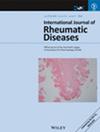Genetically Predicted Plasma Metabolome Mediates the Causal Link Between Immune Cells and Risk of Gout
Abstract
Background
Gout is a prevalent metabolic disorder characterized by a multifaceted process of development. Recent research has emphasized a robust correlation between the immune response and gout. Nevertheless, it is still uncertain if this connection is causative. Hence, the objective of this study was to investigate the causal relationship between immune cells and gout, while also analyzing the role of the plasma metabolome as metabolic mediators in this biological process.
Methods
This study explored the causal link between different subtypes of immune cells and gout using two-sample Mendelian randomization (MR). To confirm the reliability of the findings, reverse MR analysis, steiger test and sensitivity tests were conducted. A two-step mediation analysis was used to gain insight into the role of plasma metabolites as intermediate mediators.
Results
This two-sample, bidirectional, two-step MR analysis found a nominal causal link between 33 immune cells as well as 47 known plasma metabolites and gout. Reverse MR analysis and sensitivity tests demonstrated the reliability of the MR results. In addition, we found that Tetradecadienedioate (C14:2-DC) played a partially mediating role in the CD4 on activated CD4 regulatory T cell and gout pathways, with a mediating proportion of 13.16%, (95% CI = 0.65%–25.67%, p = 0.034).
Conclusion
The objective of our research was to investigate the possible causative connection between immune cells and gout. Our findings indicate that certain plasma metabolites may play a role in mediating this association. This study offers novel insights and sources of information that may contribute to the early detection and proactive measures to avoid gout in the future.

 求助内容:
求助内容: 应助结果提醒方式:
应助结果提醒方式:


